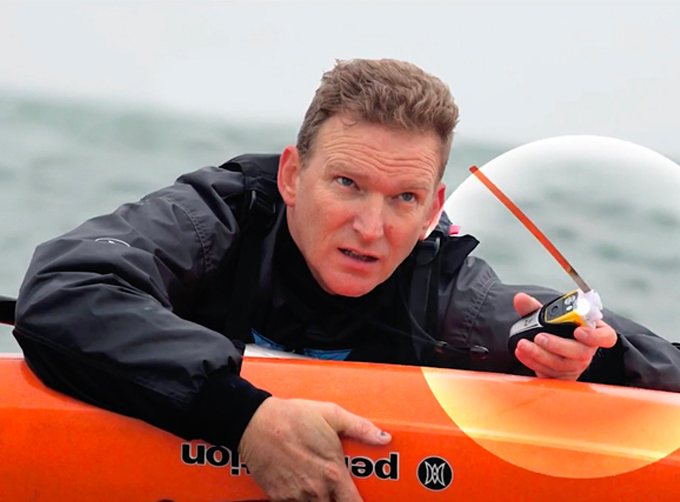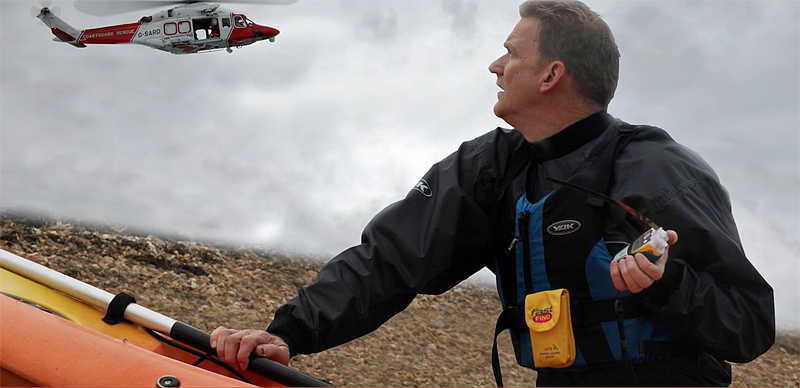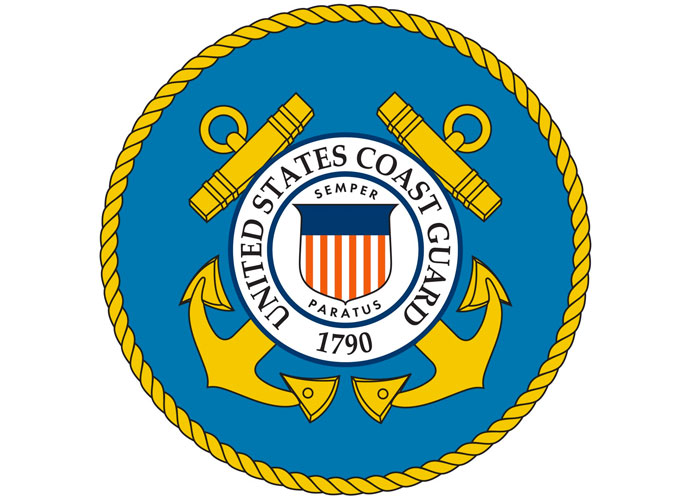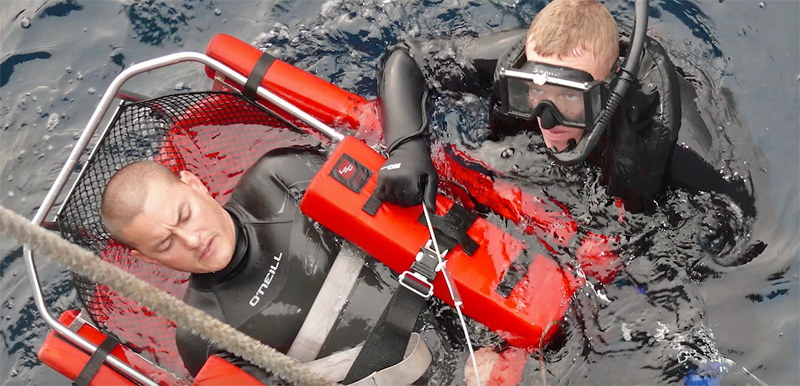
As the nation’s maritime first responder, the U.S. Coast Guard is devoted to helping boaters in distress.
Within this mission, one critical issue is finding people in the water.
Towards that end, the U.S. Coast Guard Research and Development Center (RDC), in collaboration with the U.S. Department of Homeland Security (DHS) Science and Technology Directorate (S&T), has launched the U.S. Coast Guard Ready for Rescue Challenge, a $255,000 prize competition that seeks boater safety solutions that will help make it easier to find people in the water.
When a person becomes separated from their boat or other watercraft, they can be left isolated in open waters.
A life jacket or personal floatation device (PFD) keeps a person afloat while they seek safety, however, a person in the water is a small, moving target, and even in a successful rescue mission, locating the person can take hours.
New boater safety solutions have the potential to greatly improve the chances of a successful rescue.
Current technologies such as electronic locators and reflective materials on flotation devices can help the U.S. Coast Guard find people.
However, adoption of these technologies is not prevalent, due to factors such as cost, comfort, style, and awareness.
(Learn More. For example the SmartFind G8 AIS EPIRBs offer users Accelerated Rescue via a unique combination of four search and rescue frequencies, with greater location accuracy through multi GNSS receivers and the world’s first EPIRB to contain the localized rescue power of AIS. Coupled with an unparalleled marine heritage, commitment to quality and a history of innovation, customers know they can trust McMurdo when their lives are on the line. Courtesy of the McMurdo Group, an Orolia company, and YouTube. Posted on Mar 14, 2017.)
The U.S. Coast Guard Ready for Rescue Challenge invites you to submit a concept for a solution that helps make a person in the water easier to find.
The best solutions will be effective, affordable, and hold the potential for wide adoption by recreational boaters.
This call for concepts is the first phase of an anticipated three-phase prize competition.

Phase I concepts could include a new or updated life jacket or PFD, an attachment to a life jacket or PFD, or a new safety device boaters use in addition to wearing their life jacket or PFD.
“Boater safety solutions that harness new designs and technologies can improve the chance of a successful rescue,” said William N. Bryan, DHS Senior Official Performing the Duties as Under Secretary for Science and Technology.
“New, innovative solutions are critical. We are proud to support our nation’s maritime first responder with this important, life-saving effort.”
(Learn More about the Coast Guard as it recently celebrated its 228th birthday Aug. 4, 2018. This video highlights Coast Guard operations from the past year. (Courtesy of the U.S. Coast Guard, Petty Officer 3rd Class Jasmine Mieszala and YouTube. Posted on Aug 3, 2018.)
Those interested in participating in the Challenge should submit their concept by 4:59 PM ET, Monday, October 15, 2018.
The judges will evaluate the submissions and will select up to five monetary prize winners and up to five non-monetary honorable mention award winners.
$25,000 will be distributed evenly among each of the Phase I monetary prize winners.
“The U.S. Coast Guard is devoted to helping boaters in distress. One critical challenge is finding people in the water,” said Bert Macesker, RDC Executive Director.
“Partnering with DHS S&T allows us to increase the Coast Guard’s access to innovations that make people in the water more detectable.”
“We hope to build off of the success of our previous prize competition partnership for environmentally friendly mooring.”
(Learn More. Bert Macesker, executive director of the US Coast Guard Research & Development Center, discusses the laboratory’s mission, work (including nanosatellite development), research priorities and public-private partnerships. Courtesy of the Defense & Aerospace Report and YouTube. Posted on May 26, 2017.)
In Phase II, selected participants from Phase I will participate in a “Piranha Pool” to pitch their solution and compete for a total prize pool of $120,000.
This prize will assist each monetary prize winner in developing their concept into a working prototype.
 In Phase III, the Coast Guard will field test prototypes alongside standard USCG approved safety equipment.
In Phase III, the Coast Guard will field test prototypes alongside standard USCG approved safety equipment.
At the conclusion of Phase III, the judging panel may award a total $110,000 in additional monetary prizes.
To Learn More about the U.S. Coast Guard Ready for Rescue Challenge, visit readyforrescuechallenge.com.
DHS S&T in the 2017 ‘ASTORS’ Homeland Security Awards Program

The Annual ‘ASTORS’ Awards Program is organized to recognize the most distinguished security vendors, and government/public safety agencies, as the nation continues to respond to escalating threats from home and abroad.
The U.S. Department of Homeland Security Science (DHS) and Technology Directorate (S&T) took home Four 2017 ‘ASTORS’ Platinum Awards for ‘Excellence in Homeland Security’ at ISC East in New York City.
The innovative solutions being implemented to meet those threats has led to tremendous growth in the field of Homeland Security, and to this awards program for recognition of the key contributors to our nation’s security.
-
Department of Homeland Security (DHS) Science and Technology Directorate (S&T)
- Enhanced Dynamic Geo-Social Environ (EDGE) Virtual Online Training for First Responders Open at No Cost to All U.S. First Responders Agencies, Across Disciplines for Coordinated Response to Critical Incidents
- Excellence in Homeland Security
-
Department of Homeland Security (DHS) Science and Technology Directorate (S&T)
- Resilient Tunnel Plug (RTP) to Strengthen Mass Transportation Critical Infrastructure from Disruptive Flood Events
- Excellence in Homeland Security
-
Department of Homeland Security (DHS) Science and Technology Directorate (S&T) First Responders Group (FRG)
- Flood Apex Program, Applying New & Emerging Technologies to Improve Community Resilience from Flood Disasters, Reduce Fatalities and Property Loss
- Excellence in Homeland Security
-
Department of Homeland Security (DHS) Science and Technology Directorate (S&T) Homeland Security Advanced Research Projects (HSARPA)
- Surface Transportation Explosives Threat Detection (STETD) on Developing the Capacity to Detect Potential Threat Items Throughout Rail and Subway Systems Without Alerting the Subject or Negatively Impacting the Speed of Travel
- Excellence in Homeland Security

Over 100 distinguished guests from National, State and Local Governments, and Industry Leading Corporate Executives from companies allied to Government, gathered from across North America and the Middle East to be honored from disciplines across the Security Industry in their respective fields which included representatives from:
- The Department of Homeland Security (DHS) Science and Technology Directorate (S&T)
- U.S. Customs and Border Protection
- The Department of Justice
- The Security Exchange Commission
- State and Municipal Law Enforcement Agencies
- The Royal Canadian Mounted Police
- Leaders in Private Security


















